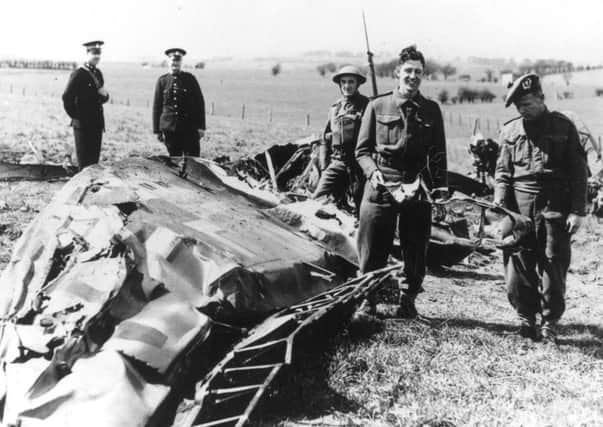Release secret files to unravel Rudolf Hess riddle, says peer


Now, on the eve of the 75th anniversary of Rudolf Hess’s extraordinary flight to Scotland, the author of a new book has called on the UK government to release its remaining classified files into the incident.
On 10 May, 1941, Hess left Augsburg airfield near Munich in a Messerschmitt Bf 110, destined for Dungavel House, near Strathaven. The country home was the residence of the 14th Duke of Hamilton, a man Hess believed might help arrange an audience with King George VI.
Advertisement
Hide AdAdvertisement
Hide AdBut heavy fog played havoc with his flight and he ended up bailing out over the moorlands above Eaglesham. Instead of a duke, he was confronted by a ploughman, who informed the authorities. Hess saw himself as a peace envoy; the British viewed him as a prisoner. He was detained until the war’s end, when he was sent for trial at Nuremberg. He was sentenced to spend the rest of his life in Berlin’s Spandau Prison, where he took his own life in 1987.
The duke’s son, James Douglas-Hamilton, Baron Selkirk of Douglas, has spent nearly half a century scrutinising the circumstances behind Hess’s flight. Over that time, he has frequently expressed his frustration at a welter of conspiracy theories.
One widely circulated hypothesis alleges it was not Hess himself who made the journey, but an imposter. Another claims that Hess was expected in Scotland, and that arrangements had been made to allow him to fly through the Royal Air Force’s defences unscathed.
Lord Selkirk believes the proliferation of such theories is largely down to the decision by successive governments to keep its records on Hess secret. Although he said the release of some information in recent years has been “timely”, he believes more could have been done.
“The evidence shows Britain had an honourable record in fighting the Third Reich and did not swerve from that position,” he explained. “Excessive secrecy with regard to the release of relevant material has, and can serve to, obscure that reality. The argument for frankness is now even stronger as the 75th anniversary of Hess’s flight approaches.”
Lord Selkirk, a former MP for Edinburgh West and Lothians MSP, has written a new edition of his book, The Truth About Rudolf Hess, first published in 1971 as Motive For A Mission.
Its latest iteration sheds new light on the fate of Albrecht Haushofer, an adviser to Hess and contact of the duke who unwittingly influenced the Nazi party’s deputy leader to fly to Scotland. Haushofer, whose mother was half-Jewish, thought he could moderate German policy from within and became increasingly associated with the resistance.However, he was executed by SS-Sturmbannführer Kurt Stawitzki, who later changed his name to Kurt Stein and evaded justice.
The Truth About Rudolf Hess is published on Tuesday by Frontline, priced £19.99